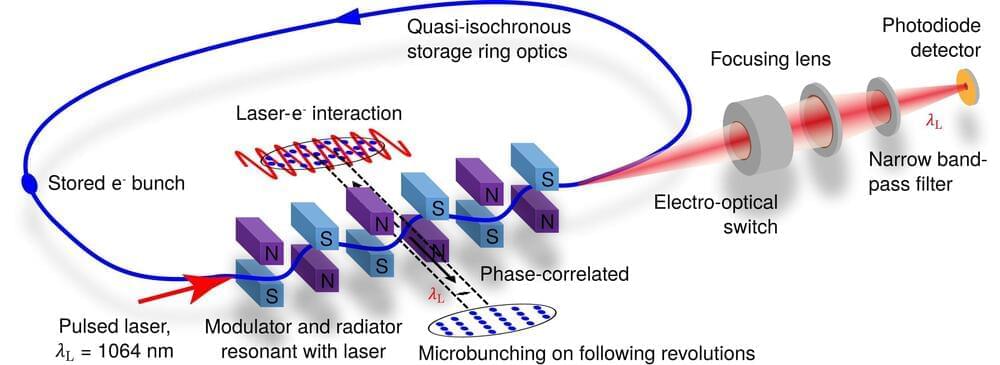When ultrafast electrons are deflected, they emit light—synchrotron radiation. This is used in so-called storage rings in which magnets force the particles onto a closed path. This light is longitudinally incoherent and consists of a broad spectrum of wavelengths.
Its high brilliance makes it an excellent tool for materials research. Monochromators can be used to pick out individual wavelengths from the spectrum, but this reduces the radiant power by many orders of magnitude to values of a few watts only.
But what if a storage ring were instead to deliver monochromatic, coherent light with outputs of several kilowatts, analogous to a high-power laser? Physicist Alexander Chao and his doctoral student Daniel Ratner found an answer to this challenge in 2010: if the electron bunches orbiting in a storage ring become shorter than the wavelength of the light they emit, the emitted radiation becomes coherent and therefore millions of times more powerful.









Leave a reply